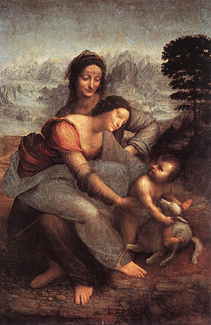莊士弘
July, 2010
Smooth
Space/Striated Space 平滑空間-條紋空間
espace
lisse/espace strie
歷史進程中,土地(la terre)從原始概念 “mother earth”,爾後,演變成是可以測量、可以作為標誌(mark; repere)的
“land”,並因為資本主義的解疆域化或「公理符碼化」(axiomatic codification),土地亦可成為在一個資金流動中可以被計算的商品──這即是德勒茲與瓜達西(以
下簡稱「德-瓜」)所
謂的「條紋空間」。反之,像那無以目測、無以標誌的空間,即是「平
滑空間」,例如:天空、空氣、大海、乾草原(steppe)、沙漠、冰原。在這空間裡,人類的視覺(optique)頓時失去功用,亦言,人類的視覺無法用視覺做任何的標誌與測量。在這個空間裡,只有感覺(sensation)、只有觸覺(haptique)、只有觸
感(touch)。然而,筆者欲強調的是,德-瓜這兩個概念不是固定的對立關係,
而是相對會相互變動的[1]。要之,平滑空間
的水亦能流變成條紋空間,將一個地區切割成另一個地區,抑或用作成軍事上的防禦部署。如此一來,它便成為條紋空間。
德-瓜在《千重台》裡的第十四章<平滑
與條紋>,他們對兩個概念有著最專注的討論。其概念的說
法,源自布雷(Pierre Boulez)的《思考今日的音樂》[2]。德勒茲以六種範型(model)來
說明此概念:「技術範型」、「音樂範型」、「航海範型」、「物理範型」、「航海範型」、「物理範型」、「美學範型:游牧藝術」(陳40)。對兩
個概念,筆者欲從1) 社會脈絡及2)
其思想運用在當代藝術作品中的說明。
l
社
會脈絡
關於條紋空間,Antonioli在她的《德勒茲與瓜達西的地理哲學》中指出:
Une des taches fondamentales de l''Etat c''est de strier l''espace sur lequel il regne, de vaincre le
nomadisme et de controler les migrations, d''exercer un proces de
capture sur des flux de populations, de marchandises, d''argent et de
capitaux, d''etablir des trajet fixes, aux directions bien determinees,
de limiter la vitesse, regler la circulation, stabiliser les
mouvements. (Antonioli 116 ; emphasis
original)
[One of the State''s fundamental tasks is
to 1) striate the space where it reigns, to conquer
the nomadism and to control the migrations; 2) to exert a process of
capture on the flux of populations, merchandises, money and capitals;
3) to establish the fixed path to the quite determined directions; and
4) to limit the speed, regulate the circulation, stabilize the
movements.] (Antonioli 116 ; emphasis original【筆者自譯】)
綜其所述,Antonioli指出條紋空的四個特色:1)控制任何流動的行為在一個既定的方向;2)捕獲資金、人口的流動;3)於各方向中建立一個故定方向;4)限制、調節與穩定流動。
反之,平滑空間猶如游牧
者的空間(spatialization)一樣,它係為一種了無方向,也無既定路徑的遊蕩。其穿上所穿的衣服與所住的住所,其實並沒有內-外部
之別。德-瓜說:
This was already the case among the nomads for
the clothes-tent- space vector of the outside. The dwelling is
subordinated to the journey; inside space conforms to outside space:
tent, igloo, boat. There are stops and trajectories in both the smooth
and the striated. But in smooth space, the stop follows from the
trajectory; once again, the interval takes all, the interval is
substance (forming the basis for rhythmic values). (ATP478)
其所棲居的帳篷、冰屋、水上人家的船,並非是像農業社會有的定居的型式,而是一場旅行。其棲居的方式
乃以大地為家,其所謂的外部-內部,其實並無任何分別。其所棲居的空間是充滿著聲音、觸感、情感、力度、強度等,這些
元素無法以視力來感知,而得仰賴身體其該元素相互之間的觸覺或感覺 (affecting
and being affected)。故此,德-瓜嘗
言:
Smooth space is filled by
events or haecceities, far more than by formed and perceived things. It
is a space of affects, more than one of properties. It is haptic rather
than optical perception. Whereas in the striated forms organize a
matter, in the smooth materials signal forces and serve as symptoms for
them. It is an intensive rather than extensive space, one of distances,
not of measures and properties. (ATP 479)
據此,德-瓜所謂的平滑空間內所蘊有的成份為:1)事件, 2) 穈集(haecceities), 3) 情感素/情動(affect), 4)觸覺空間, 5)內在強度(intensive)
海德格曾於晚年,書寫<技術的追問>[3]一文,討論、批判現代科技對人類環境中的衝擊。海德格以萊茵河(der Rhine)為例,說明古時候萊茵河的水和人類的建築物(如木橋)是兩者和諧共處,共同分享的。其小橋、流水、人家,宛如構成一幅合諧,詩意的
棲居世界。然,自從水壩的建立以後,水壩就硬生生地建立在那裡(setting-upon)。萊茵河的水流猶如遇上一個惡霸,欲圖控制、調查、儲蓄、持存(standing-reserve; Bestand)其水流的能量。這層意義上,萊茵河不再是如昔的流動而已,而是要使萊茵河改變原有的水道、流量,以
彰顯(reveal)他的力量,並供應沿其河畔的重工業的工廠的用電量。
對此議題上,德-瓜何嘗不是與這位德國思想前輩一同合作地對我們週遭環境生態的議題,至少在思想上,敞開並召喚即將到來的人們(le peuple a venir),反思現代性以區分、分類、畫界、控制等條紋化的手段來面對自然的今天。對這塊土地上,我們是否可以
少些畫界,減少大興土木的侵入,亦或禁止條紋化更多的處女地(terra
nullius)? 人與自然的關係,不應是個思考主體(thinking subject)來再現自然,並進而控制她。要之,是人的身體與自然相互作用(affecting and being affected),並且,身體-自然之間所產生的感覺誠然是既是分離,又是分享(le partage)[4]的共同體。德勒茲嘗言:「這是身體產生感受感覺,它同時是主體和客體」。「感覺有
一面轉向主體(神經系統,生命運動,本能,性格等等),有一面轉向客體(行為,場域,事件)。或者感覺完全沒有面,它是不可分離的東西,它是在世存在(etre-au-monde)。」(轉引自陳22;
21/【法文】Francis Bacon 39; 39-40) 而如此對於原本論述下位居「客體」位置的自然,在德勒茲的思想脈絡中,誠然就是既是分離,卻又形
影不離的相互分享的關係。儂曦在其《世界的
意義》中也表達出同樣的概念:
To be sure, the concrete stone does not “have” a world [.
. .] but it is nonetheless toward or in the world [au monde] in a mode
of toward or in that is at least that of areality: extension of the
area, spacing, distance, “atomistic” constitution. Let us say not that
it is “toward” or “in” the world, but that it is the world.
[. . .]
In a sense—but what sense—sense is
touching. The being-here, side by side, of all these
beings-there (beings-thrown, beings- sent, beings-
abandoned too the there). (Nancy 62-63; 強調處為原著者所加)
儂西批判海德格意義下的石
頭,只能是淪為「存在」(being)意義中的屬性(attributes),而不是石頭自己本
身。所以,儂西認為自然之物的石頭,應是它自己本身拋入(beings-thrown)的世界之中,其本身就是世界。
l
德
勒茲的美學論述[5]
德勒茲思想除了在哲學、文學、電影等範疇有著開創性的貢獻外,其美學上的貢獻更是卓越。簡言之,我們
可以用平滑空間泛稱現代藝術(確切言之,是觸覺藝術[art
haptique]);而條紋空間則
指傳統的再現藝術(或視覺藝術[art optique])。
條紋空間(傳統的再現藝術):
傳
統具象藝術有兩種特性:
(1)
意義空間
(espace des
significations; space of significations):畫家或觀畫者必須在一個距離(distance)關係上看畫。再者,該畫
會召喚出觀畫者的歷史及文化記憶,使畫作與觀畫者有著一種美的共鳴感。該畫不可能只是再現日常生活瑣事,而是具有敘述性及典型性的人物(figure illustratif et narratif)或場景。
(2)
專橫的形
式 (forme
despotique; despotic form):為了畫好某一個部位、神情、動作
等,畫家需仰賴一定的語言及方法,並遵循根深蒂固的形式,將對象物如實地再現出來。(陳18-19)
如
以下達文西的<聖母子和聖安妮>

Virgin and Child with St. Anne. c.1502-1516. Oil on wood. Louvre, Paris, France.
該
幅畫,觀者應與該畫在一個距離上來觀賞它,並且,以西方基督教文明觀之,該幅畫對歐美人士無疑可召喚出那歷史及文化的共同,共通的美感記憶。並且,該畫的構圖或人物的手勢,皆有一定的表現形式。
平滑空間
現
代藝術(筆者以為印象派以降),根據陳瑞文該文章指陳,筆者歸納有以下特徵:
(1)
觸覺(haptique)-
畫作不再是視覺在某個距離的觀看,而是使畫面的物質及力量共同表現出來。德
-瓜以米勒的作品來說明之:
The painter Millet used to say that what
counts in painting is not, for example, what a peasant is carrying,
whether it is a sacred object or a sack of potatoes, but its exact
weight. This is the postromantic turning point: the essential thing is
no longer forms and matters, or themes, but forces, densities,
intensities. (ATP 343; 法文 422-23)
(2)
流動性( fluidity):
猶如游牧的空間裡,它沒有一定或既定的形式,亦沒有標定的路線。它是:
a) 不再強加一種明確且斷然的方向; b) 不再強加必要的、身分[sic]性的輪廓; c)不再強加暗示性的敍事; d)集中心力於潛在的材質力量; e) 讓尋常的事物面貌呈現某種蠢動和起伏強度。(陳38)
3) 力量捕獲的場域
(capture of the forces)
The essential relation is no
longer matters-forms (or substances- attributes); neither is it the
continuous development of form and the continuous variation of matter.
It is now a direct relation material-forces. A material is a
molecularized matter, which must accordingly "harness" forces; these
forces are necessarily forces of the Cosmos. There is no longer a
matter that finds its corresponding principle of intelligibility in
form. It is now a question of elaborating a material charged with
harnessing forces of a different order: the visual material must
capture nonvisible forces. (ATP 342;【法
文】422)
一幅畫不是佈署不
是材料與表達型式的問題,而是材料-力量的問題;問題不再是否可以理解的型式,而是使其可見的材料
來捕捉那不可見的力量。
筆者曾於閱
讀《千重台》期間,將平滑空間與條紋空間的特徵做成表格對照比較。茲羅列如下(其數字係為《千重台》中,英譯本的頁數):
|
條紋空間與平滑空間的特色
|
|
striated space
|
smooth space
|
|
agricultural
life
|
nomad
life
|
|
being/identity/stable/constant
|
becoming
(361)/different/
fluid/ metamorphosis (360)
|
|
closed
(476)
|
open
(475)
|
|
compares
|
dispars
|
|
continental
|
sea
|
|
cosmos
|
chaosmos
|
|
endogenous(427)
|
exogenous
(427)
|
|
interiority(427)
|
exteriority
(427)
|
|
fixed
|
mobile
(475)
|
|
geometrical
|
topological
(361)
|
|
homogeneous
|
heterogeneous
|
|
logos (laws)
|
nomos
|
|
majority
|
minority
|
|
memory
|
forgetting
|
|
movement
|
speed
|
|
royal
science
|
nomad
science/
minor science (361)
|
|
sedentary
|
fluid,
flow, mutant
|
|
state
|
anarchy
|
|
state
apparatus (361)
|
war
machine (361)
|
|
tree;
arborescent
|
rhizome;
rhizomatic
|
|
urstaat
|
nomad
|
|
visual/optic/distant
vision (496)
|
haptic/
close vision (496)
|
Bibliography
Antonioli, Manola. Geophilosophie de
Deleuze et Guattari. Paris : L''Harmattan, 2003.
Deleuze, Gilles. Francis Bacon: The Logic
of Sensation. Minneapolis:
U of Minnesota
P, 20004.
--- and Felix Guattari. A Thousand
Plateaus: Capitalism and Schizophrenia. Trans. Brian Massumi. Minneapolis : U
of Minnesota
P, 1987. [1980]
Heidegger, Martin. “The Question
Concerning Technology.” Ed. David Farrel Krell. Martin Heidegger: Basic Writings. San
Francisco:
Harper Collins, 1993. 311–42.
Nancy, Jean-Luc. The Sense of the World.
Trans. Jeffery S. Librett. Minneapolis : U
of Minnesota
P, 1997.
West-Pavlov, Russell. Space in Theory:
Kristeva, Foucault, Deleuze. Amsterdam: Rodopi, 2009.
陳瑞文。<觸覺空間與平滑空間-德勒茲論培根的思想開展與特色>。《現代美術學報》。14(11), 10, 2007. pp. 11-52.
[1] 讀者可見千重台【英譯】中對音樂的討論 (p. 478),以及航海的討論(p.470,
p.480),皆再再顯示出這兩個概念不是永恆不變的空間,而是會因用途(function)的不同,而使其內容構成而不同。故這兩概念是會相互變動影响的。
[2] 讀者可見千重台【英譯】的註解四 (p.573): Pierre Boulez, Boulez
on Music Today, trans. Susan Bradshaw and Richard Bennett
(Cambridge, Mass.: Harvard University Press, 1971), pp. 83ff
[3] Heidegger, Martin. “The Question Concerning Technology.” Ed. David Farrel Krell. Martin Heidegger: Basic Writings. (San
Francisco: Harper Collins, 1993) 311–42.
[4] 有趣的是,在法文中,“partage”一字具有「區離」(partition),亦有「分享」(sharing)之意。人與自然誠然為分開的個體,但一旦人與自然產生互動,亦即有了相互之間的分享關係。
[5] 筆者的討論,主要出自於陳瑞文<觸覺空間與平滑空間-德勒茲論培根的思想
開展與特色>該篇文章。
TOP
